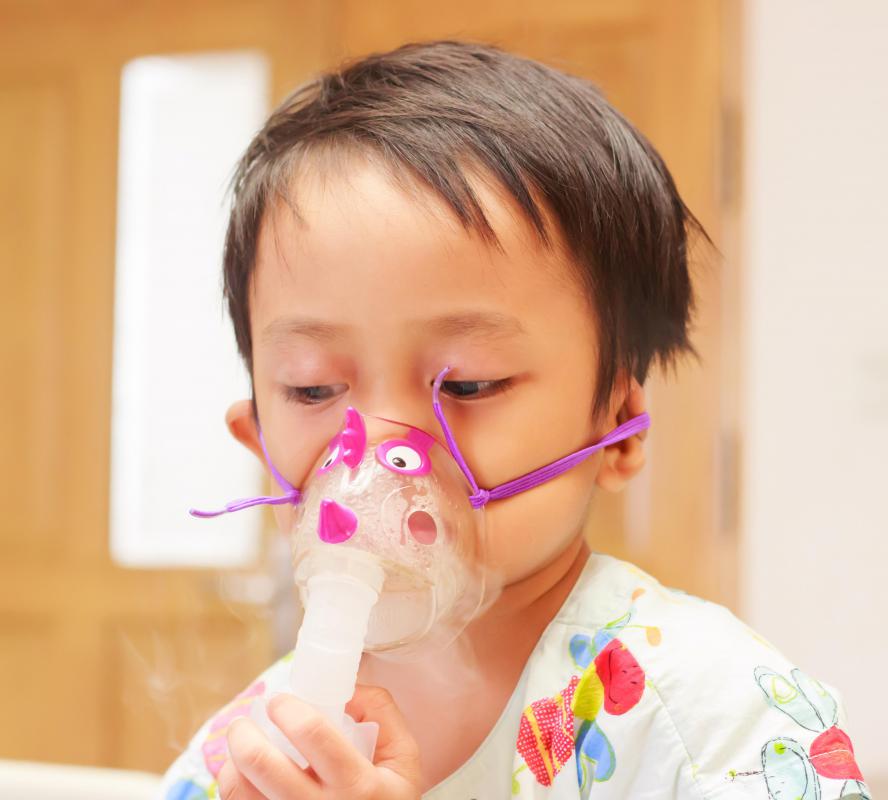At TheHealthBoard, we're committed to delivering accurate, trustworthy information. Our expert-authored content is rigorously fact-checked and sourced from credible authorities. Discover how we uphold the highest standards in providing you with reliable knowledge.
What is Cyanosis?
Cyanosis is a condition which manifests when the blood is poorly oxygenated. In cyanotic people, the lack of oxygen in the blood causes the body to acquire a bluish tinge. There are several different types of this condition, and as a general rule, the condition indicates there is a serious medical problem which requires attention. If someone starts to turn blue, he or she should be taken to a doctor for evaluation and treatment.
In the simplest form of poor blood oxygenation, the nail beds appear slightly blue. Peripheral cyanosis also includes the extremities, such as the hands and feet. Central cyanosis, a very serious form, causes the lips and tongue to look blue. In someone with this condition, the blood is either circulating sluggishly and poorly, or the blood is not getting oxygenated enough. The decrease in oxygen can eventually cause tissue death.

Classically, this condition appears when someone is having difficulty breathing. People with respiratory illnesses like asthma and emphysema may be prone to developing bluish nail beds and extremities, and the condition is also common in people with heart failure and heart problems, because the malfunctioning heart is not able to pump the blood forcefully enough. People with heart problems may also experience edema or swelling of the limbs, along with clubbing of the fingers. Cold temperatures and smothering can also result in cyanosis.

In a condition known as acrocyanosis, the condition is chronic and persistent, and it tends to stay in the extremities. This condition may be malignant or benign, and patients who experience it should be evaluated to determine whether or not the acrocyanosis indicates a more serious problem. In patients with a benign form, the condition is primarily a cosmetic problem, since other people often express concern or distress when they note the bluish extremities of someone with acrocyanosis.

Newborns can also develop poor oxygenation, which can alarm parents. With very young children, the condition is usually caused by the thick, sluggish blood of newborn children. A slight disruption in blood flow can cause the momentary appearance of blue nails or skin, but the condition may resolve itself. If the condition is only present in one limb, it's a sign that the blood was restricted briefly by tight clothes or a bent joint. If an infant becomes cyanotic in more than one location or displays signs of distress or central cyanosis, it indicates a need for immediate medical attention.
AS FEATURED ON:
AS FEATURED ON:















Discussion Comments
To define cyanosis is pretty much to declare that something is bluish in color. When a person literally starts to turn blue it is also more than just a little bit serious.
I learned this the hard way when my grandmother had a heart attack. When we found her, she literally had a bluish tint to her face and body. It was horribly frightening, and not something that I wish to ever see firsthand again. Something bad was obviously going on.
I’m not sure why people turn blue when they lose a significant amount of air, but they really do.
Cyanosis is a pretty scary issue, and is often used by doctors to help them know if people are getting enough oxygen.
People who are choking can start to look slightly blue, and I know that when my children were infants we were told to watch out for any bluish coloring. I think it had something to do with SIDS, maybe, and with the child forgetting to breathe for a long time.
I’m not sure of the condition's name when the child doesn’t breath, begins to turn blue and then gasps for air, but apparently it’s very treatable when caught early on. I'm not sure if it is congenital or not.
I think I might have had a heart attack, though, if this had ever happened to mine!
@SZapper - That does sound like it could be a little disconcerting. I can't imagine looking down and finding my nail beds blue!
As a cyanosis sufferer you might be interested to know that the definition of cyanosis is simply "the condition of being blue". In medical terminology the root word "Cyano" means blue and the suffix "osis" means condition of.
As an asthmatic I am pretty familiar with cyanosis. I experience it during asthma attacks-usually my nail beds turn slightly blue. The first time I noticed it it really threw me off! I thought I was dying or something.
My doctor told me that you should really start worrying when cyanosis spreads other places besides just the nail beds. She said I should just concentrate on getting my asthma attack under control and not panic about slight bluish nails.
Cyanosis treatment is usually treatment of whatever it is that is making the person not able to breath such as asthma or emphysema. So for me cyanosis treatment is my fast acting inhaler.
Post your comments